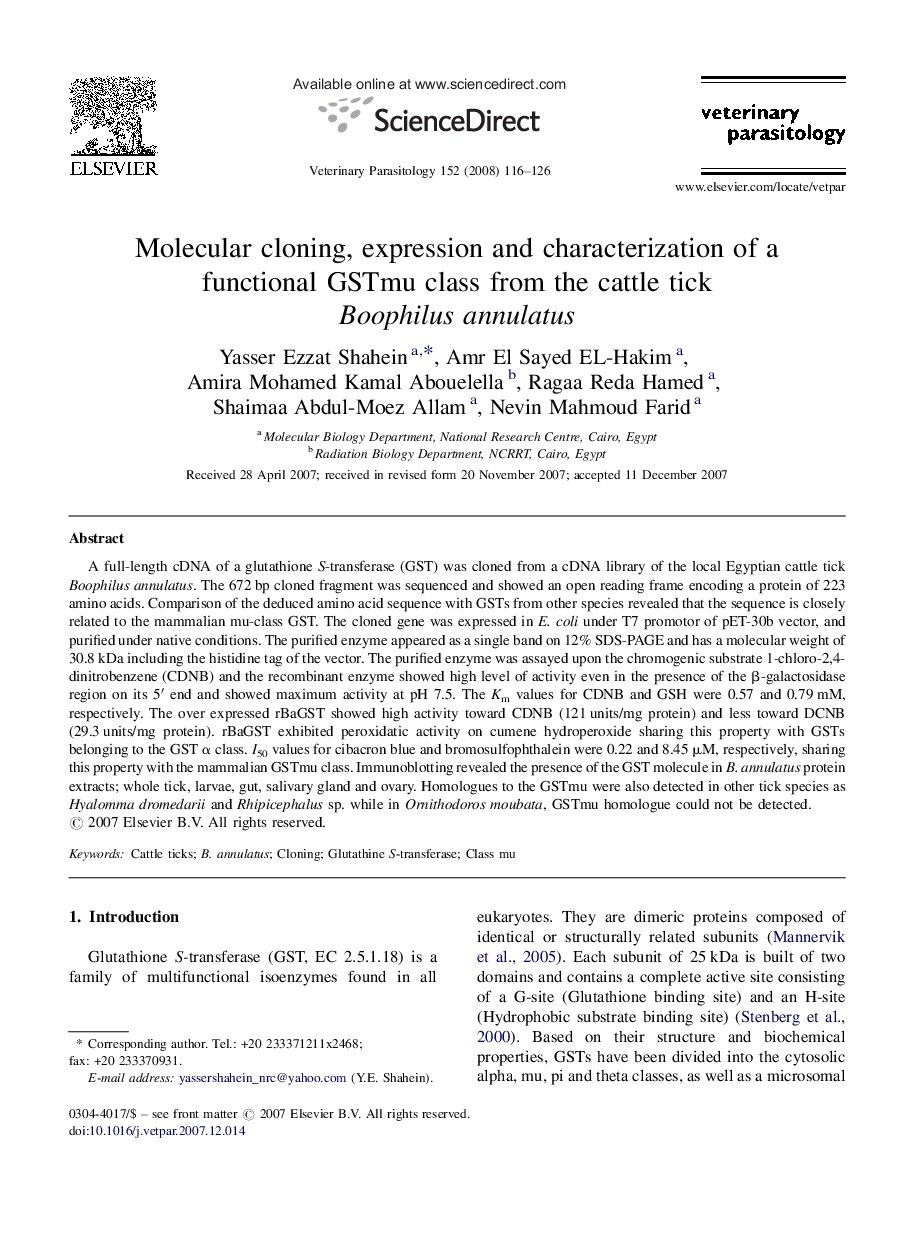| Article ID | Journal | Published Year | Pages | File Type |
|---|---|---|---|---|
| 2471688 | Veterinary Parasitology | 2008 | 11 Pages |
A full-length cDNA of a glutathione S-transferase (GST) was cloned from a cDNA library of the local Egyptian cattle tick Boophilus annulatus. The 672 bp cloned fragment was sequenced and showed an open reading frame encoding a protein of 223 amino acids. Comparison of the deduced amino acid sequence with GSTs from other species revealed that the sequence is closely related to the mammalian mu-class GST. The cloned gene was expressed in E. coli under T7 promotor of pET-30b vector, and purified under native conditions. The purified enzyme appeared as a single band on 12% SDS-PAGE and has a molecular weight of 30.8 kDa including the histidine tag of the vector. The purified enzyme was assayed upon the chromogenic substrate 1-chloro-2,4-dinitrobenzene (CDNB) and the recombinant enzyme showed high level of activity even in the presence of the β-galactosidase region on its 5′ end and showed maximum activity at pH 7.5. The Km values for CDNB and GSH were 0.57 and 0.79 mM, respectively. The over expressed rBaGST showed high activity toward CDNB (121 units/mg protein) and less toward DCNB (29.3 units/mg protein). rBaGST exhibited peroxidatic activity on cumene hydroperoxide sharing this property with GSTs belonging to the GST α class. I50 values for cibacron blue and bromosulfophthalein were 0.22 and 8.45 μM, respectively, sharing this property with the mammalian GSTmu class. Immunoblotting revealed the presence of the GST molecule in B. annulatus protein extracts; whole tick, larvae, gut, salivary gland and ovary. Homologues to the GSTmu were also detected in other tick species as Hyalomma dromedarii and Rhipicephalus sp. while in Ornithodoros moubata, GSTmu homologue could not be detected.
